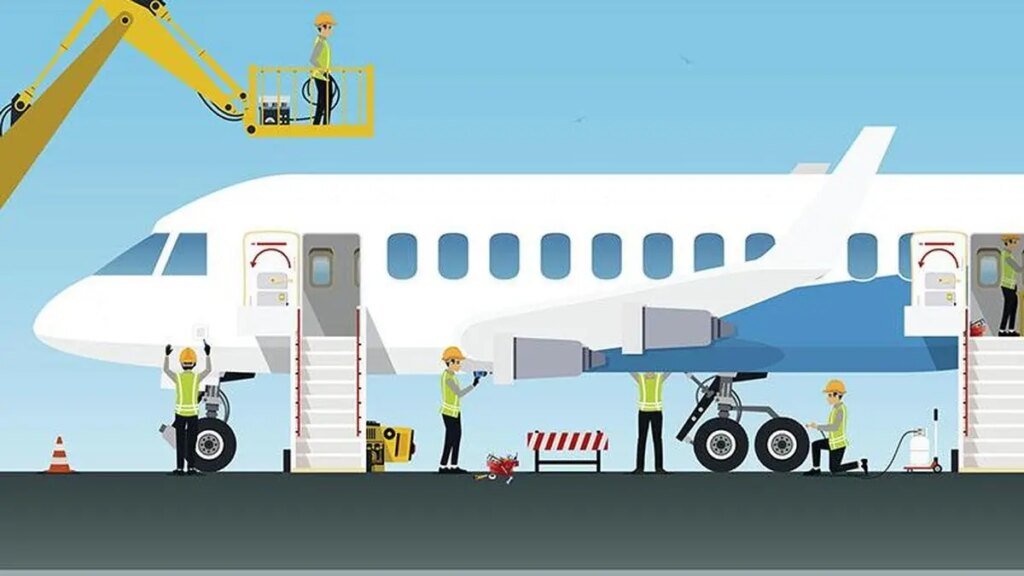Shutdown impact: US reels from lost paychecks, canceled flights, and stalled contracts; will the US economy rebound or slip deeper into slowdown?
The longest federal government shutdown in US history may be nearing its end, but economists say it has already left deep scars on an economy struggling with slow growth, inflation, and uncertainty. With 1.25 million federal workers unpaid since October 1 and thousands of flights canceled, the economic fallout is being felt nationwide — from Washington’s suburbs to America’s busiest airports, AP reported.The Senate late Monday night passed a bipartisan funding package to end the 41-day government shutdown, sending it to the Republican-controlled House of Representatives for approval. Speaker Mike Johnson said the House could vote as soon as Wednesday to clear the bill and send it to President Trump for his signature. However, not all Democrats are pleased with the compromise, and Senate Minority Leader Chuck Schumer faces criticism from within his party for conceding without securing a firm deal on Obamacare subsidies.In the meantime, while most lost activity may eventually recover once the government reopens, experts warn that billions in economic output will never be regained. “Short-lived shutdowns are usually invisible in the data, but this one will leave a lasting mark,” said Gregory Daco, Chief Economist at EY, citing the shutdown’s record duration and growing disruptions to travel and welfare services.
The Congressional Budget Office (CBO) estimates that a six-week shutdown will cut US economic growth in the fourth quarter by 1.5 percentage points, reducing output by half from the previous quarter. Even after reopening, about $11 billion in economic activity will be permanently lost, it said.Missed paychecks and weakened sentiment hit households hardRoughly 650,000 federal employees were furloughed, and all told, unpaid wages could reach $16 billion by mid-November, reducing household spending and holiday travel, according to the CBO. Although back pay is expected, the sudden loss of income has forced families to postpone large purchases and delay rent or mortgage payments.The impact is particularly sharp in the Washington, D.C. region, where the unemployment rate already stood at 6% before the shutdown. Federal workers make up 5.5% of Maryland’s workforce, while other states such as New Mexico (2.9%), Oklahoma (2.6%), and Alaska (3.8%) also face ripple effects.Federal contractors, who number as many as 5.2 million nationwide, are not guaranteed back pay, compounding the financial strain. Economist Bernard Yaros of Oxford Economics said, “The federal award spigot has all but turned off at the Department of Defense, NASA, and Homeland Security,” estimating that $800 million in new government contracts were at risk of not being awarded each day.Consumer sentiment has also soured sharply. The University of Michigan’s consumer sentiment index fell to 50.4 in November, its lowest in three years, as pessimism about personal finances and business conditions deepened.Flight cancellations, SNAP delays, and Fed policy falloutThe shutdown’s most visible impact has been on air travel, with airlines canceling over 7,500 flights since Friday amid air traffic controller shortages. The Federal Aviation Administration (FAA) ordered carriers to cut flight capacity by up to 10% to ease the burden on unpaid staff, a move that analysts say could cost the travel industry $2.6 billion if the standoff continues through mid-November.Tourism Economics estimated that travel spending is down $63 million per day, affecting hotels, restaurants, and local businesses. “The longer this goes on, the fewer trips will be rescheduled,” the firm said.The shutdown has also delayed $8 billion in monthly SNAP food aid for 42 million Americans, disrupting grocery spending and household budgets. Some states have covered shortfalls temporarily, but the White House and Congress remain at odds over full benefit funding.Meanwhile, the Federal Reserve’s ability to assess the economy has been crippled by missing data on inflation, unemployment, and consumer spending. Chair Jerome Powell likened the situation to “driving in the fog,” signalling that the central bank may hold off on a December rate cut due to data gaps.“What do you do if you’re driving in the fog? You slow down,” Powell said. “The lack of data could make it difficult to justify another rate cut at this stage.”Even as Congress edges toward a resolution, economists warn that the shutdown’s lasting damage to public confidence, household budgets, and business investment could weigh on recovery well into next year.




